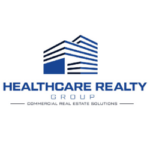The healthcare real estate sector has seen growing interest from investors in recent years, driven by favorable demographic trends like the aging population as well as the continued shift towards outpatient and ambulatory care settings. However, effectively navigating this complex sector requires an in-depth understanding of key healthcare market trends influencing facility needs and targeted strategies to enhance value in healthcare real estate investments. This comprehensive article provides critical insights for investors to maximize returns in this attractive but complex real estate niche.

Healthcare Market Trends Reshaping Real Estate Needs
Several major evolving healthcare trends are fundamentally reshaping real estate needs and creating both opportunities and risks for astute investors to consider:
Shift to value-based care models: There is an accelerating industry-wide push towards value-based care models focused on improving patient outcomes rather than the volume of services delivered. This transformation impacts facility design needs to better coordinate care delivery and connect various outpatient touchpoints. Real estate projects must factor in the need for more team-based workspaces and flexible spaces to accommodate this shift.
Rise of consumerism: Patients increasingly want and expect a retail-like healthcare experience combining compassionate care with consumer conveniences. They also demand convenient access through online and mobile tools. Future real estate projects must holistically factor in the patient experience with innovations like spacious waiting rooms, valet parking, self-check-in kiosks, and seamless digital interfaces.
Ambulatory care acceleration: Outpatient and ambulatory facilities are seeing surging demand and accelerated growth while inpatient admissions decline. Real estate investors need to intimately align new projects to this watershed shift from centralized hospitals to distributed outpatient facilities and services. The future lies in right-sized decentralized clinical spaces.
Telehealth adoption surge: Telehealth use explosively grew during the COVID-19 pandemic and is forecasted to see continued further growth. While still requiring physical facilities, the rise of telehealth will influence future real estate needs and design considerations like increased demand for smaller private exam rooms.
Focus on care coordination: Healthcare systems are increasingly focused on care coordination and continuity across settings, demanding real estate configurations that seamlessly connect various sites of care into unified delivery networks. No facility is an island unto itself.
Population health analytics: Health systems are aggregating and analyzing population health data and seeking to proactively manage large groups. The ability to access and apply analytics to inform planning is becoming a differentiator. Real estate decisions can no longer be made in a data vacuum.
Strategies to Enhance Value
Given these pivotal healthcare real estate trends, what specific strategies can healthcare real estate investors employ to enhance value and investment returns?
Modernizing and Repurposing Existing Facilities
For real estate investors with existing hospital or medical office holdings, comprehensively renovating and modernizing aging facilities to meet contemporary patient expectations can pay significant dividends.
Cosmetic upgrades to flooring, lighting, wall colors, artwork and furnishings create a more comforting, retail-like environment that patients increasingly demand. Expanded food service with healthy menus also caters to today’s patient preferences.
Extending functionality via new technologies like contactless kiosks and wayfinding apps makes navigation more convenient for patients. Energy efficiency upgrades to HVAC and water systems lower operating costs.
Many hospitals and offices also have unused or underutilized spaces that can potentially be profitably repurposed. For instance, converting unused sections into revenue-generating outpatient infusion centers, imaging centers, or even specialty pharmacies taps into growing ambulatory services demand.
Developing New Outpatient Facilities
Given shifting care patterns, building entirely new outpatient facilities can be a pathway to enhance healthcare real estate value. Depending on local market demand, developing specialized outpatient centers to expand an organization’s footprint can generate returns.
Examples include developing a network of conveniently located urgent care centers to capture visits for minor illnesses or injuries without lengthy ER waits. Freestanding emergency departments nearer to populations can also divert non-acute ER visits.
Medical office buildings housing multispecialty physician groups offer patients centralized access points. New ambulatory surgery centers allow health systems to capture profitable outpatient procedures formerly performed in expensive hospitals.
The key is locating facilities purposefully closer to underserved or high-demand populations, which provides patients with more convenient access while simultaneously meeting unsatisfied healthcare needs. These smaller-scale specialized outpatient facilities boost utilization and demonstrate greater efficiency than crowded mega-hospitals.
Incorporate Flexibility into Design
Given the rapid pace of change in the healthcare sector, new outpatient facilities should incorporate ample flexibility into their design right from the start.
Expandable spaces that can easily be adapted to modified uses over time are ideal. Exterior designs should also accommodate potential future expansions through modular designs.
Inside, utilizing moveable partitions instead of fixed walls allows for simpler reconfigurations as needs change. Similarly, modular and interchangeable components like wall panels, counters, and lighting foster straightforward modifications down the road.
Leverage Digital Technology and Data Analytics
Digital tools and connected device technology are changing how healthcare is delivered. To maximize value, modern healthcare real estate projects need to seamlessly incorporate technology like telehealth capabilities, location-based wayfinding, patient portals, and clinical analytics tools that collect population health data to optimize planning.
On-site or mobile health kiosks providing basic triage and care for minor urgent issues via telehealth represent a flexible and scalable new care model made possible by technology. Real estate spaces should literally be designed with prime kiosk spaces in mind.
Consider Alternative Care Settings
Retail clinics housed within pharmacies or supermarkets represent an alternative ambulatory setting—delivering convenient basic care directly to patients in everyday places they already frequent. This represents an opportunity for healthcare groups.
Repurposing somewhat declining malls or shopping centers as accessible medical hubs also provides healthcare real estate investors intriguing avenues to reach patient populations in high-traffic community locations.
Investing in or renting smaller footprint spaces within such alternative care sites can supplement and extend traditional facilities’ reach right in the heart of communities.
Key Takeaways
The healthcare real estate landscape offers attractive opportunities for investors but also requires vigilant navigation of an increasingly complex care delivery environment.
By taking a strategic approach that both proactively enhances value in existing properties through modernization while also investing in new assets aligned with emerging outpatient demand, investors can capitalize on this sector’s potential while mitigating risks.
The strategies covered, from renovating aging hospitals to incorporating plug-and-play flexibility into new outpatient centers, provide healthcare real estate investors various avenues to optimize returns while adapting to this fast-changing industry. The future belongs to those who take a prescient and nimble approach.






